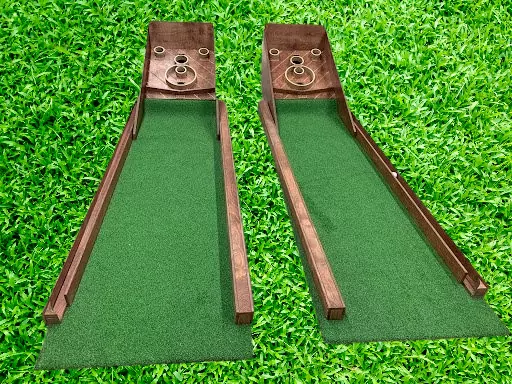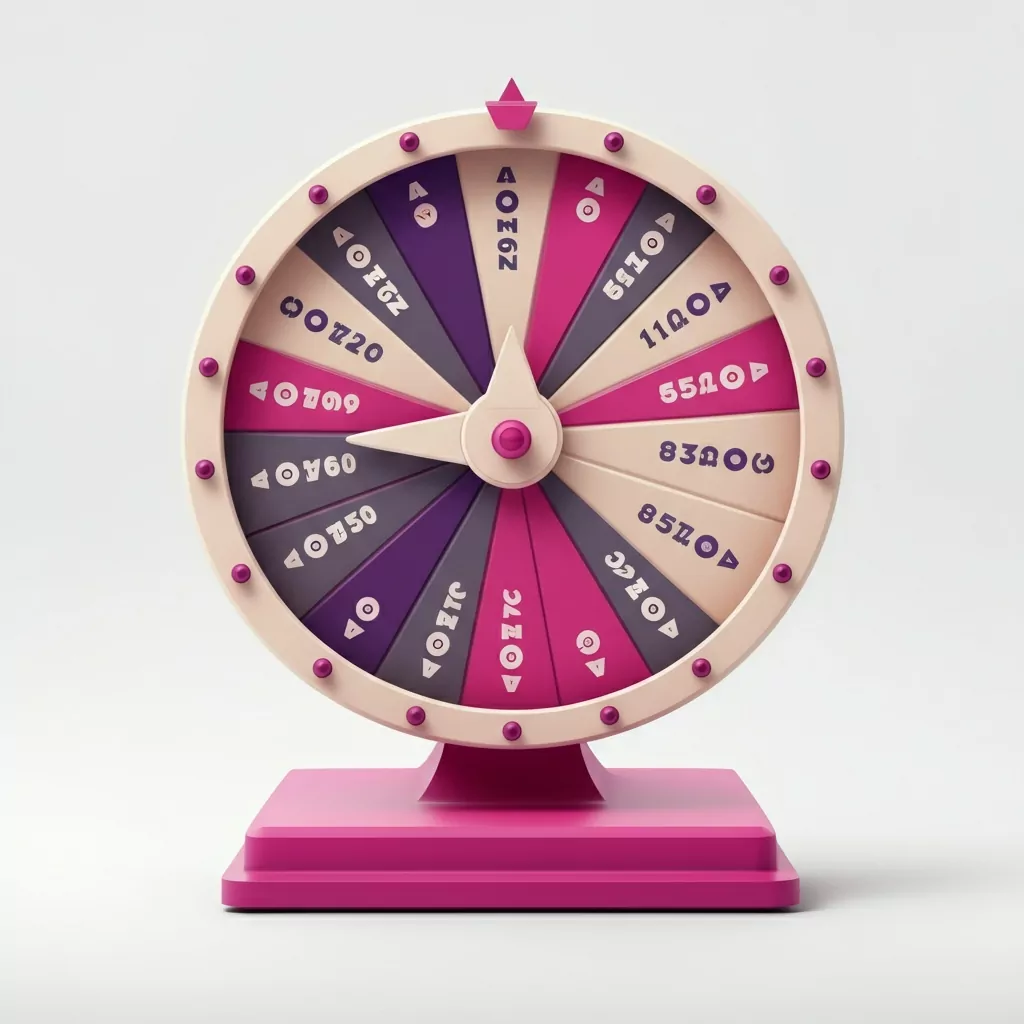What Are Countertop Point-Of-Purchase Displays?

Have you ever wondered why some products seem to catch your eye more than others while you’re waiting in line to check out? The secret weapon behind this phenomenon is the countertop point-of-purchase (POP) display, a marketing guru’s best friend. These nifty little displays are strategically placed where decisions are made and transactions happen, making them perfect for promoting sales and enhancing product visibility.
From candies to keychains, these displays are designed to leverage our impulse buying tendencies, making us more likely to pick up something extra as we pay for our purchases. In this article, we’ll explore what makes countertop POP displays so powerful and how experiential marketing companies in Toronto, like Pop49, are leveraging them to maximize retail impact.
Countertop Point-of-Purchase Displays Are Marketing Units for Product Promotion
Countertop point-of-purchase (POP) displays serve as an effective marketing tool designed to enhance product visibility and promote sales directly at the point of purchase. Positioned strategically on countertops where transactions occur or decisions are made, these displays capitalise on the customer’s proximity to merchandise, leveraging impulse buying tendencies. By presenting products at eye level or within easy reach, countertop POP displays not only draw attention but also facilitate an interactive experience, allowing customers to physically engage with the product.
This interaction plays a crucial role in influencing purchasing decisions, making these displays a powerful asset in the retail environment. Crafted to highlight specific products or special offers, countertop POP displays are versatile and can be customised to fit various marketing strategies, from introducing new items to boosting sales of existing merchandise. Their design and placement are critical, aiming to catch the shopper’s eye and entice them to consider products they might not have sought out initially.
By doing so, these displays effectively increase product awareness and can significantly impact sales figures. In essence, countertop point-of-purchase displays are a key element in the retail marketing mix. Brands looking to optimize these touchpoints often turn to an experiential marketing supplier that understands both design and customer psychology. These displays offer a unique opportunity to connect with consumers at a critical moment in their purchasing journey.
Why Are They Used in Retail?
Countertop point-of-purchase displays are utilised in retail settings primarily to increase product visibility and encourage last-minute purchases. These displays are strategically placed where they’re most likely to catch the customer’s eye, like at checkout counters ,making them a high-converting tool in the toolkit of any Toronto experiential marketing agency looking to boost impulse buys and product visibility. The rationale behind their use is deeply rooted in consumer behavior; they leverage the natural tendency of shoppers to make impulse buys when presented with conveniently placed, attractive product options.
Additionally, these displays serve a critical role in highlighting seasonal or promotional items, essentially creating a sense of urgency or tapping into the novelty appeal, thereby encouraging quicker purchasing decisions. By enhancing product visibility, countertop displays not only attract attention but also significantly influence purchasing decisions, ultimately aiming to boost sales and improve the customer experience by simplifying choices.
To Increase Product Visibility
Countertop displays strategically position products at eye level or within easy reach, significantly enhancing their visibility. This visibility is crucial in a retail environment as it directly influences consumer awareness and interest in the product.
To Encourage Last-Minute Purchases
By placing items in high-traffic areas, especially near the checkout, countertop displays exploit impulse buying tendencies among shoppers. This setup prompts customers to make spontaneous purchase decisions, often adding items to their basket that were not on their original shopping list.
To Promote Special Offers or Discounts
These displays are ideal for highlighting special promotions, discounts, or seasonal offers. Their strategic placement ensures maximum exposure to shoppers, thereby increasing the likelihood of these deals being taken advantage of, which can significantly boost sales for those specific items.
Types of Countertop Displays
Countertop displays come in various forms, each designed to cater to different retail needs and product types. Standees, often used for their high visibility, are compact and can be placed strategically to catch the customer’s eye. Shelf units are versatile, accommodating multiple product types or brands in a single display, thus maximising the use of counter space.
Digital displays offer an interactive engagement option, appealing to tech-savvy consumers and providing dynamic content such as product information or promotions. Each type of display is selected based on the specific goal of promoting certain products, enhancing the shopping experience, and ultimately driving sales.
Standees for High Visibility
Standees are designed to stand out, offering high visibility to featured products. They are particularly effective in catching the customer’s eye from a distance, making them ideal for promoting new releases or special offers.
Shelf Units for Multiple Product Types
Shelf units provide a versatile solution for displaying multiple product types or brands within a compact space. This type of display allows for an organised presentation of a variety of products, encouraging customers to browse and discover.
Digital Displays for Interactive Engagement
Digital displays bring a modern twist to countertop marketing, enabling interactive engagement with customers. These displays can showcase dynamic content, such as videos or interactive demos, providing a rich, engaging experience that can enhance product appeal and drive sales.
Products Commonly Displayed
Countertop displays are often used to showcase products that benefit from impulse buying or require heightened visibility. Small, inexpensive items like candies or keychains are typical, as their low price point and high appeal make them perfect candidates for last-minute purchases. Impulse buy products such as magazines or snacks also find a prime spot in these displays, enticing customers to add these items to their purchase as they wait in line.
Lastly, seasonal or promotional items for limited-time offers are prominently featured to take advantage of their timely appeal, encouraging customers to capitalise on the offer before it expires. These displays are strategically used to maximise product exposure and stimulate sales for items that might otherwise be overlooked.
Small, Inexpensive Items Like Candies or Keychains
Small, inexpensive items are perfectly suited for countertop displays due to their affordable nature and high appeal. These items, such as candies or keychains, are often purchased on impulse, making them ideal candidates for last-minute additions to a shopper’s basket.
Impulse Buy Products Such as Magazines or Snacks
Products that are commonly bought on impulse, including magazines or snacks, benefit greatly from being placed in countertop displays. This positioning takes advantage of the customers’ waiting time, encouraging them to make additional purchases.
Seasonal or Promotional Items for Limited-Time Offers
Countertop displays are an effective platform for showcasing seasonal or promotional items that are available for a limited time. Highlighting these offers in a prominent location encourages customers to take advantage of the deal before it expires, boosting sales for these timely products.
Impact on Consumer Behaviour
Countertop point-of-purchase displays significantly attract attention to products, thereby influencing purchasing decisions. By strategically placing items within easy reach or sight, these displays tap into the impulse buying behaviour of consumers, often leading them to purchase items they had not initially planned to buy. This method not only enhances the customer experience by simplifying choices but also encourages the exploration of new or complementary products.
Consequently, countertop displays effectively drive sales and foster a more engaging shopping environment, especially when designed by a team with deep expertise in retail-focused experiential marketing. Whether your goal is brand engagement or quick conversions, the impact on consumer behavior is undeniable.
Attract Attention to Products
Countertop displays are designed to attract attention to products, placing them in the direct line of sight of customers. This strategic visibility prompts shoppers to notice and consider items they might otherwise have overlooked.
Influence Purchasing Decisions
By highlighting specific products or offers, countertop displays significantly influence purchasing decisions. Shoppers are more likely to make impulse buys or add additional items to their purchases when products are prominently displayed and easily accessible.
Enhance Customer Experience by Simplifying Choices
Countertop displays can enhance the customer experience by simplifying choices. By curating a selection of products and presenting them within easy reach, these displays help customers make quick, satisfying decisions, improving their overall shopping experience.
Design Considerations
When creating countertop point-of-purchase displays, several key design considerations must be taken into account to ensure effectiveness. Visibility of the product is paramount; the display must be designed in such a way that it catches the eye of the consumer from a distance and from different angles. Accessibility for customers is also crucial; products should be within easy reach, allowing for effortless interaction and examination.
Finally, branding and aesthetic appeal play a significant role in attracting attention and conveying the product’s message. The display should align with the brand’s identity and values, using colors, logos, and materials that resonate with the target audience. These design elements, when harmoniously combined, can significantly enhance the display’s ability to engage customers and drive sales.
Visibility of the Product
Ensuring the product is visible from various angles and distances is critical. A well-designed display captures consumer attention, making the product stand out amidst a busy retail environment.
Accessibility for Customers
Accessibility is key for encouraging customer interaction with the product. Displays should be designed to allow easy reach and facilitate a hands-on experience, enabling customers to pick up and examine the products easily.
Branding and Aesthetic Appeal
The branding and aesthetic appeal of the display must align with the company’s image and values. At Pop49, our creative team ensures every countertop unit not only fits the space, it amplifies your brand message in real time. Consistent branding elements like logos, colors, and designs not only attract attention but also strengthen brand recognition and loyalty among consumers. Visit our experiential marketing projects on Facebook to see firsthand how Pop49 brings your brand vision to life with strategic, immersive experiences.
Customisation Options
Customisation plays a vital role in the effectiveness of countertop point-of-purchase displays. Options vary widely, allowing displays to be tailored to fit different counter spaces, which is crucial for maximising visibility and accessibility in diverse retail environments. Branding elements, such as logos and colors, can be incorporated to reinforce brand identity and create a more engaging customer experience.
Additionally, the choice of materials can be customised to match store aesthetics, whether seeking a cost-effective solution with cardboard, durability with plastic, or a premium look with metal. This level of customisation ensures that each display can meet specific marketing goals and customer engagement strategies, making them an adaptable tool in the retail setting.
By Size to Fit Different Counter Spaces
Customising displays by size ensures they can be effectively utilised in various counter spaces, from compact cash wraps to expansive countertops, optimising the use of available retail space and enhancing product visibility.
With Branding Elements Like Logos and Colors
Incorporating branding elements such as logos and colors into the design of countertop displays reinforces brand identity, creating a consistent and memorable shopping experience for customers.
Using Different Materials to Match Store Aesthetics
Selecting materials that complement the store’s aesthetics allows for a cohesive look and feel. Whether opting for cardboard for a cost-effective approach, plastic for durability, or metal for a premium finish, the choice of material plays a crucial role in aligning the display with the store’s overall design theme.
Materials Used in Displays
The choice of materials for countertop point-of-purchase displays is critical, impacting both the aesthetic appeal and the durability of the display. Cardboard is a popular choice for its cost-effectiveness and versatility, allowing for easy customisation with brand colors and logos. Plastic offers durability and longevity, making it suitable for displays that require a more permanent presence or frequent handling.
Metal is chosen for its premium look and feel, elevating the perceived value of the products displayed and enhancing the overall shopping experience. Each material offers distinct advantages, enabling retailers to select the best option to meet their specific needs and match the store’s aesthetic.
Cardboard for Cost-Effective Solutions
Cardboard is widely used in countertop displays for its cost-effectiveness. It allows for easy customization, making it possible to tailor designs to specific brand aesthetics while keeping expenses low.
Plastic for Durability and Longevity
Plastic is chosen for its durability and longevity, offering a sturdy option for displays that need to withstand frequent handling or longer display periods without showing wear.
Metal for a Premium Look and Feel
Metal is utilised in displays to provide a premium look and feel, elevating the product’s perceived value and enhancing the overall shopping experience with its sleek and sophisticated appearance.
How to Measure Effectiveness
Measuring the effectiveness of countertop point-of-purchase displays involves analysing key performance indicators that reflect their impact on sales and customer engagement. An increase in sales of displayed products serves as a direct indicator of success, signifying that the display effectively attracted attention and influenced purchasing decisions. Customer feedback on display attractiveness provides insights into how the display’s design and placement resonate with shoppers, influencing their perception and interaction with the products.
Finally, ease of access and product replenishment rates can indicate how well the display facilitates customer interaction and maintains its appeal over time, ensuring that products remain visible and accessible. Together, these metrics offer a comprehensive view of a display’s contribution to retail goals, guiding future strategies for maximising effectiveness.
Increase in Sales of Displayed Products
An increase in sales of products featured in countertop displays is a primary measure of their effectiveness. This uptick in purchases indicates that the displays are successfully attracting customers and encouraging them to buy.
Customer Feedback on Display Attractiveness
Customer feedback regarding the attractiveness and appeal of the displays provides valuable insights into how these marketing tools are perceived. Positive feedback can signal that the displays are engaging and well-received by shoppers.
Ease of Access and Product Replenishment
The ease of access to products within the displays and the frequency of product replenishment needed are indicators of how effectively the display maintains customer interest and product availability. Displays that are easily accessible and regularly restocked ensure continuous customer engagement and satisfaction.
Make Every Countertop Work for You
Countertop point-of-purchase (POP) displays do more than hold products, they influence buying decisions, increase sales, and enhance the customer experience. By strategically placing eye-catching, well-designed displays in high-traffic areas, retailers can tap into impulse buying tendencies and showcase must-have products in the perfect spot. From standees to digital displays, the right setup can make a big impact on shopper behavior.
At Pop49, we know what makes marketing work. With expertly crafted messaging and strategic branding, we help businesses turn everyday shopping moments into sales opportunities.
Don’t let valuable counter space go to waste. Place your products where they’ll be noticed and bought. Contact Pop49 today to design your countertop POP display.
More Articles

What is Skee Ball?
Discover the power of skee ball in experiential marketing. Learn how Pop49’s custom games can elevate your brand and engage…

Prize Wheel vs Digital Scratch and Win
Compare digital scratch cards and prize wheels. Discover which tool boosts engagement better and how to control prize odds with…

Measuring ROI from Spin-to-Win Games
Learn how to measure ROI from Spin-to-Win games, track key metrics, and optimise campaigns to boost sales and customer engagement…